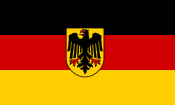Germany Visa Guide

Germany Schengen Visa: Your Comprehensive Guide to Discovering Central Europe
Central Europe, with its compelling blend of modern innovation and timeless traditions, is a dream for many travelers. And for those with Germany on their radar, the Germany Schengen Visa is an indispensable key. This visa not only allows access to the heart of Germany but also to the broader Schengen Area.
Delving into the Germany Schengen Visa
 The Germany Schengen Visa is a specific short-stay visa granting its holder the privilege of traveling throughout the Schengen zone countries. This journey can last up to 90 days within a span of 180 days, making it perfect for tourists, business professionals, and short-term students alike.
The Germany Schengen Visa is a specific short-stay visa granting its holder the privilege of traveling throughout the Schengen zone countries. This journey can last up to 90 days within a span of 180 days, making it perfect for tourists, business professionals, and short-term students alike.
Advantages of the Germany Schengen Visa
Seamless Exploration
This visa provides a golden ticket to traverse 26 European countries that form the Schengen Area. Whether you’re eyeing the vineyards of France, the Swiss Alps, or the canals of Amsterdam, the Germany Schengen Visa has you covered.
Dive into Diverse Visa Types
Just like its French counterpart, the Germany Schengen Visa comes in a variety of flavors. Each type of Schengen visa serves a specific purpose, from the Tourist Schengen Visa for leisurely visits to visas for business, studies, or medical treatments.
World-class Attractions
Germany is the bedrock of cultural, historical, and technological marvels. From the Brandenburg Gate and Neuschwanstein Castle to the Berlin Wall remains and Oktoberfest, Germany promises unforgettable memories.
The Pathway to Acquiring the Germany Schengen Visa
Attaining the Germany Schengen Visa involves a process with specific steps. Here’s a breakdown to provide clarity:
- Identifying the Right Visa Type: Before diving in, determine the visa category that aligns with your intentions.
- Filling the Application Form: Accurately fill in all the needed personal and travel specifics.
- Gathering Required Documents: Essential documents include a valid passport, travel and health insurance, accommodation details, and financial sustenance proofs, among others.
- Scheduling an Appointment: Once your dossier is complete, book an appointment with the German consulate or embassy in your country of residence.
- Attending the Interview: This face-to-face interaction involves answering questions about your plans in Germany and the Schengen Area.
- Paying the Visa Fee: Conclude your application by covering the visa fee, which may vary based on visa type and applicant age.
Ensuring a Successful Application
Present a Clear Travel Itinerary
Clearly outline your travel plan, including entry and exit dates, places of stay, and activities planned. A coherent itinerary lessens the chances of application rejection.
Provide Convincing Evidence of Return
Consulates want assurance that you’ll leave the Schengen Area after your visa expires. Furnish documents like return tickets, employment contracts, or property deeds as evidence.
Maintain Transparent Financial Records
Showcasing a stable financial background is essential. This assures authorities that you can sustain yourself during the visit without illegal means.
Peeking into the Future: ETIAS
As travel dynamics evolve, so do entry requirements. The upcoming ETIAS authorization is an essential system for visa-exempt travelers. While it doesn’t replace the visa, it’s a significant enhancement to the Schengen Area’s security measures.
Germany, with its multifaceted attractions, is a top pick for countless global travelers. The Germany Schengen Visa not only provides a gateway to this central European gem but also to the expansive Schengen region. By understanding the nuances and complying with the requirements, you’re setting the stage for a hassle-free, enriching European escapade.
